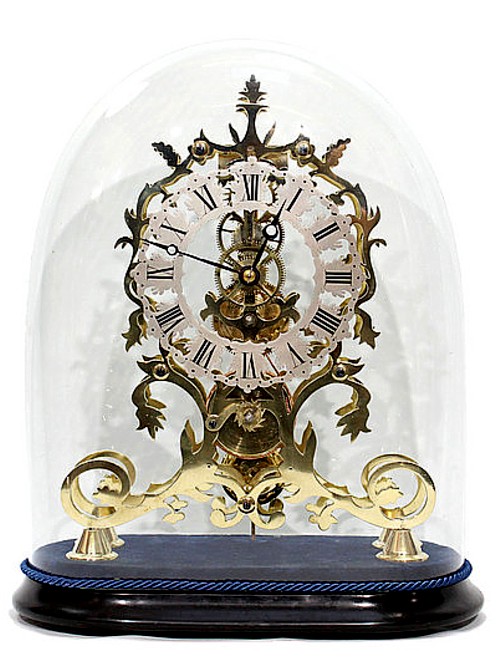 |
| In the OMG category we find this masterpiece by Newtown, Connecticut, artist, Michael Johnston. |
 |
| The persistence of time? |
When I first considered writing about the relationship between clocks and art I quickly realized there were several directions I could go. I could delve into paint-ings involving clocks and time, the most famous of which, Salvador Dali's The Persistence of Mem-ory, has little to do with either. However many other painters have dealt with the "persistence of time," as symbolized first and foremost by clocks. Another ap-proach would be to forget about clocks and just explore the ways and means artists have dealt with time itself. And finally, the ap-proach I've chosen use deals with works of art which double as time pieces--creative clocks. The main reason for this angle is that, thanks to the ready availability and reasonable prices of various clockwork kits today, virtually anyone, artist or otherwise, can unleash his or her creative impulses in creating clock art. It doesn't even take a great deal of skill, mostly just simple imagination. The results range from OMG to "What the hell...?"
Before I go on, let me confess that I've never actually made a clock. I have painted a few and in doing so, dealt with the passage of time; but I've already sidestepped that type of art. Having said that, let me note that virtually no other practical item in our daily lives supports such a broad range of creative possibilities. Whether it's superimposing clock hands over a painting, integrating them into the painting, or incorporating hundreds of possible materials into a work which very often may cross the thin line between two-dimensional and three-dimensional art. The result being that which makes clock art such a fascinating endeavor.
 |
| Clocks from recycled art materials (photos), and virgin art materials (tightly rolled strips of colored paper) |
 |
| Skeleton clock c. 1860 to c. 1880, London, John Lancelot Smith & the Clerkenwell Steam Clock Works |
Long before artists began to paint clocks, they took to designing and creating clocks; and in the process evolved a whole new aesthetic which we've come to call "skeleton" clocks (above). That is, a time piece, elegant in design and materials, in which there is no attempt to disguise the fascinating workings of the clock, but to, in fact, emphasize them. Of course, this is largely an antique art form from the days when precise and careful winding of the clock (to avoid damaging the spring mechanism) was something of a science, if not an art in itself. Today, there's very little fascination in watching a battery power a tiny electric motor turning hands, or a computer chip lighting LEDs.
 |
| The largest clock in the world. |
It would seem that the next logical step beyond skeleton clocks came in the realm of scale. Although there are larger ones, the two massive window clocks at the Orsay Museum in Paris personally comes to mind (below). Of course, when we think of gigantic clocks we instantly picture Big Ben in London (above). However, today that iconic British landmark rates as little more than a familiar face as compared to the monster clock the Saudi's have installed overlooking the Grand Mosque in Mecca (left). At an astounding 151 feet in diameter it is more than six times the size of Big Ben. It has four faces and sits some 1750 feet in the air, making it not only the largest clock in the world, but the most elevated one as well. The London bell tower is a mere 316 feet tall. We might term this type of development as "architectural" clocks.
 |
Copyright, Jim Lane
The Orsay clock window with Paris in the background. |
Moving another step up in scale has been the popularity of "garden" clocks in which the clock face is tilted slightly toward the viewer with various colorful plants and flowers used to create the numerals around the edge over which the giant mechanical "hands" rotate. In fact, regardless of size, about the only limitation an artist faces in building a clock is to keep the face clear so the hands can rotate unhindered. In painting clocks, on the other hand, as seen in my own The Works (bottom) the endeavor doesn't even abide that limitation.
 |
| A symbol of the Geneva watch industry, the famous flower clock, located at the edge of the Jardin Anglais (English Garden) since 1955, is a masterpiece of technology and floral art. |




No comments:
Post a Comment